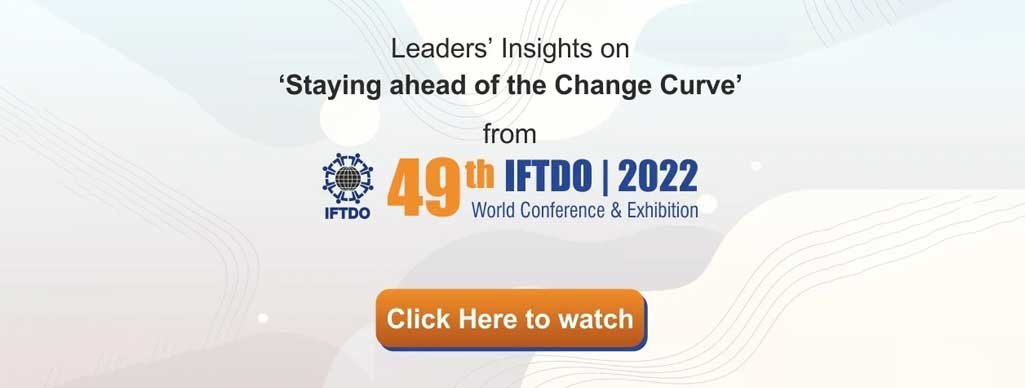
Sabitha Natraj, IOCL
snatraj@indianoil.in

It was at a hallway chat that a colleague of mine sprung an opinion that set my thought process thinking. ‘Elephants can dance’ he said- referring to the adaptability of a large organization to respond to market changes.
Size matters in business. Walmart, Apple, Amazon, Pepsi are transnational organizations that are massive in size and yet nimble to respond to customer needs quickly. Peter Drucker had said ““Large organizations cannot be versatile. A large organization is effective through its mass rather than through its agility. Fleas can jump many times their own height, but not an elephant.”
Witnessing the fast growth of organizations across the globe, would it still be relevant that large organizations matter more through their mass than through their agility?
Agility- A Managerial Capability
Agility is a capability. People, teams, and entire organizations can have agility or be agile, indicating that they can proactively sense and respond to the change around them. Agility is an ability to adapt and respond to change; agile organizations view change as an opportunity, not a threat
Agility fundamentally comprises the ability to sense and adapt rapidly to new information, requirements, or strategically relevant conditions. A basic requirement for agility consists of clear and understandable objectives, responsible leadership, respectful communication, a suitable learning infrastructure, and the ability to experiment and play around with new ideas.
For individual employees or managers, agility involves anticipating what might happen, managing the unexpected, and adapting to new situations. Most notably, Pulakos, Arad, Donovan, and Plamondon’s (2000) research suggested eight competencies that are required for adaptability at work:
(1) handling emergencies,
(2) handling work stress,
(3) solving problems creatively,
(4) dealing with uncertain situations,
(5) learning work tasks, technologies, and procedures,
(6) interpersonal adaptability,
(7) cultural adaptability, and
(8) physically oriented adaptability.
OLD AND NEW PARADIGMS
The Mckinsey report on “The Five Trademarks of Agile Organizations” draws attention to old paradigms of referring to organizations as machines with unprecedented effectiveness and shopfloor efficiencies. Companies like Ford with large market-shares, pioneered the concept of management theories: they were hierarchical and specialized. Organizations were referred to as machines. For decades, organizations that embraced this machine model and the principles of scientific management dominated their markets, outperformed other organizations, and drew the best talent.
From the 2000’s the machine paradigm witnessed a perceptible shift brought about by the ‘digital revolution’ that transformed industries, economies, and societies. In a highly interconnected, technology driven world, organizations are now embracing a new paradigm- they are now seen as ‘Living Organisms’ with agility and empowerment.
The Agile organization is the new dominant paradigm. Rather than organization as a machine, the agile organization is a living organism.
Mckinsey in its report has listed Five trademarks of an Agile organization:
North Star embodied across the organization.
Network of Empowered teams.
Rapid Decision and learning Cycles.
Dynamic People Model that Ignites Passion
Next Generation Enabling Technology
IFTDO GLOBAL CONFERENCE: The bugle-call for an Agile Workforce
It was veritably a ‘FORWARD MARCH’ bugle call for strategic, organisational, leadership and individual agility to augur transformational changes. The International Federation of Training and Development (IFTDO) Global Conference at New Delhi 19TH & 20TH MAY 2022 had ‘Strategies for an Agile Workforce’ as its main theme.
‘HOW CAN HR PRACTICES INSTITUTIONALISE AGILITY’ was an anchor theme. Particularly thought-provoking were viewpoints expressed by Dr.David Ulrich, Dr.Santrupt Mishra and Dr.Tanvi Gautam.
When disruptions happen, organisations with a strong culture respond quick enough and can sustain market shocks. Sequentially, can evolving, absorbing learning adapting, flexible agile culture be programmed or coded in the normal performance fabric of an organisation?
Agility may be an emerging human, organisational capability the speakers highlighted. Agility defines creating a future without revisiting or updating the past. It is not about market share but more about market opportunities; agility has lesser regard to processes and greater regard to outcomes. An agile organization would not look at product as a competitive advantage, but its strong culture as a differentiated experience to its customers.
There is an absolute necessity for agility in organisations as expectations of stakeholders, shareholders, regulators, and customers are changing dynamically and constantly. Agility recognises that no solution is permanent. It requires a mindset change to continuously grow, evolve, learn, unlearn, and adapt.
These deliberations made one wonder whether ‘Empowerment’ and ‘Facilitation of change management’ maybe two cornerstones for the success of agility driven strategies. In a hierarchical junior, middle, and senior management structures, ‘Empowerment’ of junior level officers for quick market driven executions and ‘Facilitation of agile work culture’ as an essential KRA for middle and senior level executives – may usher in agility in quicker implementations.
While junior level officers require delegated autonomy to respond to market changes, the middle and senior level executives may need to complement the speed and responsiveness by partnering and facilitating change. It is seen that as executives ascend in their hierarchical levels, their ability to take risks or their commitment to encourage experiments/pilot efforts may decrease.
It is also true that strategically an organisation needs to clarify areas and efforts that needs to be open for autonomous market driven responses and those that needs to be deliberated and decided. It is understood that a larger focus on this would enhance efficiencies of current delegated and decentralised systems.
The IFTDO conference has most certainly been thought-provoking and stimulating to usher in Agile Work Cultures.
Posted in HR Insights | No Comments »
Recent Articles
- HR Facts
- Did You Know?
- The agility to adapt and respond
- Leaders’ Insights on ‘Competencies for Sustainability’
- Leaders’ Insights on ‘Staying ahead of the Change Curve’
- ONGC prepares Gen Next to take on baton
- Normalizing Mental Health at Workplace
- Importance of experimentation and smart failures in organizations
- Race
